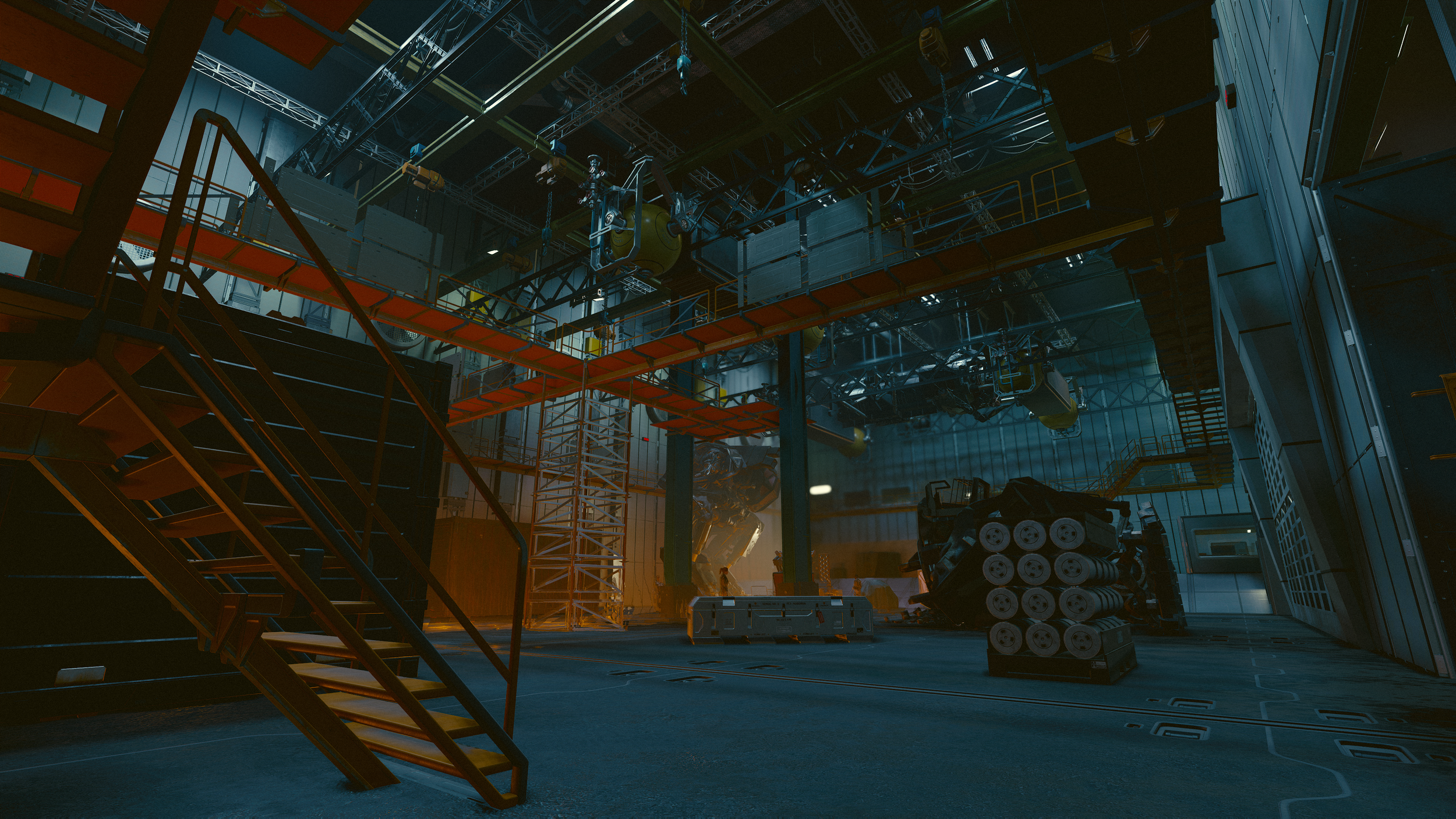
A Starfield Quest
Edge of Dawn is a single-player Starfield level that featured stealth and freedom choices. The player receives intel that a facility named Dawn Factory is secretly producing dangerous, illegal robots. With minimal starting information besides the factory's location, players are encouraged to explore and approach the mission in their own way. The level was designed and developed solo over the course of about 2 months.
Edge of Dawn
Playthrough Video
Design Goals
Exploration-Driven Design
Players begin with minimal information and are encouraged to explore freely. Optional paths, secret entrances, and environmental clues reward curiosity and observation.
Nonlinear Progression
No single correct path. Players can gather intel, find alternative entry points, or bypass encounters entirely, shaping their own unique experience.
Flexible Problem Solving
Supports diverse player approaches, from stealth and combat to social strategies like intimidation, persuasion, and bribery, all leading to different outcomes.
Reactive World & Consequences
Responds dynamically to player actions, discovering bodies or hacking systems. Choices made during infiltration have lasting impacts on how the mission unfolds.
Goal
Environmental Storytelling & Visual Framing
Guided Focus Through Lighting & Props
Dynamic lighting and purposeful object placement subtly direct the player's attention to key interactable elements and infiltration paths within the factory.Focal Landmark: Factory Exterior
The towering industrial facade of Dawn Factory dominates the skyline, immediately establishing the player’s target and setting a tense, oppressive tone.Two-Layered Spatial Design
Observation Room as High Ground Goal: The boss’s observation room sits elevated at the heart of the factory, clearly signaling the main objective.
Tactical Foreground Elements: Side entrances, vents, and terminals are placed in the player's line of sight, offering immediate actionable options and reinforcing a layered sense of progression.
Narrative-Driven Level Design Highlights
Minimal Intel, Maximum Discovery
The player starts with almost no guidance beyond the factory's location, making exploration, observation, and deduction core to both narrative and gameplay.Dynamic Infiltration Options
Multiple approaches — such as bribing guards, stealth takedowns, or manipulating systems — allow players to solve problems in ways that reflect their chosen playstyle.Organic Storytelling Through World Design
Information is delivered through overheard conversations, interactive terminals, and hidden spaces, rewarding attentive players with deeper insight into the conspiracy.Emergent Escapes & Smart Navigation
Combat is never forced. Players can plan creative escapes using alternate paths like secret entrances, making navigation feel both intuitive and reactive.
Deep, Optional NPC Interactions
Multi-Layered Dialogue System
Optional NPCs feature branching dialogue trees, offering both mission-critical intel and ambient worldbuilding through casual conversations.Character-Driven Design
Each NPC is written with distinct motivations and personalities, revealed naturally through player-driven dialogue choices.Context-Rich Exploration
Secondary dialogue paths uncover hidden lore, conspiracy clues, and faction dynamics, rewarding players who take time to engage and investigate.
Design
Choice-Driven Discovery
Information as a Gameplay Layer
Instead of handing players direct objectives, information is embedded in overheard conversations, NPC exchanges, and environmental storytelling.
➤ The level rewards curiosity and persistence, turning "intel gathering" into a form of player agency.Example: NPC Dialogue & Side Entrances
A casual line from a worker might hint at a hidden side door, or a vague complaint could lead the player to explore the server room and find a new path forward.
Emergent Systems, Player-Curated Experiences
Designed for Flexibility Without Chaos
Early versions leaned heavily into random encounters and branching logic, but were refined to maintain design clarity.
➤ The final implementation supports multiple outcomes — without losing the designer’s control over pacing and key story beats.Example: Power Shutdown Pathing
Players can reach the boss’s observation room through stealth, dialogue, or hacking — but all paths are funneled through key intel moments, keeping the experience coherent and rewarding.
Combat as a Consequence, Not a Requirement
Reactive Encounters Instead of Combat Loops
Combat was never positioned as the main mechanic — instead, it emerges naturally from failure, aggression, or player choice.
➤ Encounters are avoidable, but still designed with full mechanical support, ensuring tension and player agency.Example: Post-Power Shutdown Escape
Triggering the factory-wide shutdown can attract guards. Players can choose to fight, sneak, or use the secret exit introduced earlier — reinforcing payoff for earlier exploration.
WHAT WENT WELL?
Efficient Pre-Production & Clear Vision
Locked in the core concept and layout early, allowing more time for iteration and polish.
Avoided major reworks by establishing clear narrative and gameplay goals from the start.
Maintained consistent direction throughout development, leading to smoother execution.
Well-Scoped Level Design
Scoped the level based on prior solo projects and development timelines.
Prioritized player freedom without overcomplicating systems or requiring excessive assets.
Delivered the intended experience without needing to cut major features.
High Iteration Efficiency
Organized modular test spaces to prototype infiltration methods and dialogue outcomes quickly.
Made regular use of playtest feedback loops to refine stealth pacing and alternate paths.
Balanced complexity and clarity through constant playtesting and self-audits.
WHAT WENT WRONG?
Unresolved Bugs Over Time
Several key issues — such as AI behavior after power shutdown — remained unpatched for long periods during development.
These bugs eventually forced design workarounds that limited polish and broke immersion in certain cases.
Lack of Early Playtesting
Due to time constraints, early playtests were skipped or delayed.
As a result, players later discovered unintentional sequence breaks and skipped major parts of the level.
Earlier feedback could have helped identify and resolve these progression issues sooner.
WHAT I LEARNED?
Early Playtesting Is Critical
Delaying playtests can lead to blind spots in pacing, sequence breaking, and player logic.
Even a rough prototype can reveal major design flaws that aren't obvious to the creator.
Freedom Requires Structure
Designing for player choice doesn’t mean removing structure — strong anchoring points help keep the experience cohesive.
Tying different approaches back to shared characters or objectives prevents narrative and logic from falling apart.
Bugs Need a Priority Pipeline
Ignoring known bugs for too long can lead to broken systems and costly rework.
Establishing a bug triage and resolution timeline is just as important as level layout or narrative planning.






